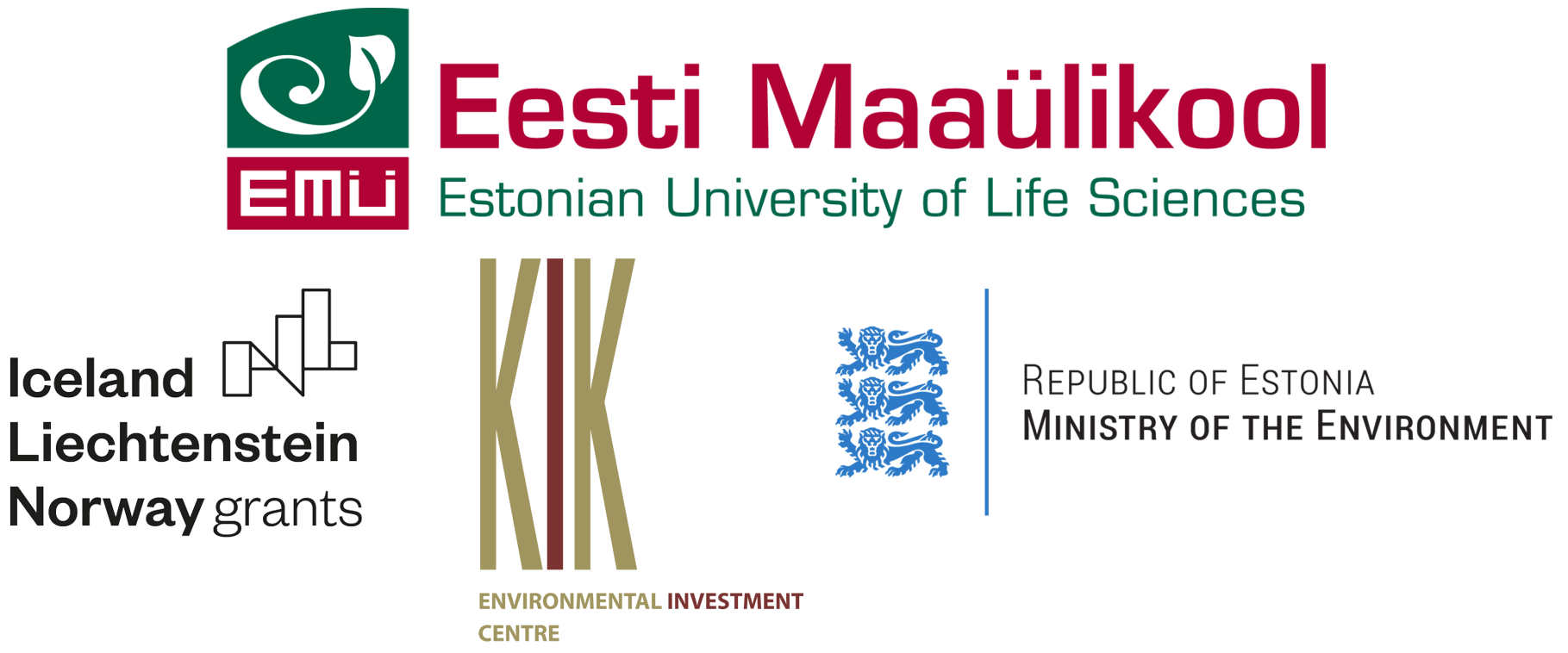
The establishment and increase in abundance, distribution, and persistence of aquatic invasive species (AIS) is a source of concern in Estonia. The spread of AIS can have great ecological impacts on native communities and habitats. Our project “Eradication of aquatic invasive species in Estonian freshwaters” was funded through The European Economic Area (EEA) grants “Climate Change Mitigation and Adaption” call I “Ecosystem resilience increased”. The main goal of this project is to help protect and restore native communities’ resilience to climate change by eradicating and controlling the spread of AIS.
To assess the risk of introduction, survival and spread of 40 AIS that are of concern in the European Union, a report was prepared in 2017 (Kraut 2017). This report took into account the classification of species introduction pathways developed by the Convention on Biological Diversity, the survival of species in Estonian climate and the probability of their introduction through the observed routes. However, an analysis of ten more species is currently needed (for more information see “Activities” section).
AIS situation today
The first alien crayfish species, Signal crayfish (Pacifastacus leniusculus), was found in Estonia in 2008 in Mustjõgi River, Harju County. As of 2020, Signal crayfish have been found in numerous waterbodies across Estonia. In addition to Signal crayfish, in 2017 a Spiny-cheek crayfish (Faxonius limosus) was detected in Pärnu River, and its distribution area continues to expand upstream, reaching Reiu River estuary in 2020. The third alien crayfish species, the Marbled crayfish (Procambarus virginalis), was first found in 2017 in an outflow channel of the cooling system of the Baltic Power Plant, flowing into the water reservoir of Narva River. There are several local distribution areas of Marbled crayfish, and the risk of further spread in Narva Water Reservoir and the main river is high.
The ongoing spread of alien crayfish of North American origin is the biggest threat to the native Noble crayfish (Astacus astacus) in Estonia. This is mainly because they act as a reservoir host for the causative agent of crayfish plague (Aphanomyces astaci), which is a lethal disease for Noble crayfish. In addition, alien crayfish are more aggressive, fertile and resilient to changes in environmental conditions. The spread of these species has led to the extinction of a large proportion of Europe’s indigenous crayfish populations. To stop the spread of alien crayfish species in Estonia, more effective methods must be developed and applied to protect local Noble crayfish populations.
Furthermore, in addition to alien crayfish, the distribution of the perennial aquatic plant Nuttall’s waterweed (Elodea nutatallii, also native to North America) will be mapped. The rapid growth of this species causes numerous ecological and economic problems, such as loss of invertebrate and fish diversity and recreational potential, causing unpredictable changes to the waterbody and limiting the use of water as a resource for economic purposes. In Estonia, Nuttall’s waterweed is believed to be widely distributed, however, reliable information of its distribution, abundance and possible ecological impact is lacking.
Kraut, Ann (2017) Euroopa liidu jaoks probleemsete invasiivsete võõrliikide liikumisteede analüüs. Ökoloogia ja maateaduste instituut, Tartu Ülikool.